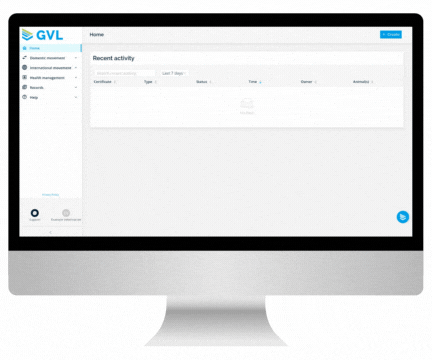Navigating Common Pitfalls
Top Mistakes Veterinary Professionals Make with CVIs
Certificates of Veterinary Inspection (CVIs) are crucial documents in the veterinary field, ensuring that animals meet health standards for travel and compliance. However, even experienced veterinary professionals can encounter pitfalls that may compromise the effectiveness and reliability of these certificates. Here are the top mistakes professionals make when dealing with CVIs and how to avoid them.
1. Incomplete or Inaccurate Information
One of the most common errors is submitting CVIs with incomplete or inaccurate information. This can include missing details about the animal's health history, vaccinations, or even the owner's information. Such oversights can lead to legal issues, delays in travel, or refusal of entry for the animal.
Solution: Double-check all entries on a CVI form. Utilizing an electronic vet system such as GlobalVetlink minimizes human error by automating data entry and ensuring all required fields are completed correctly.
2. Not Keeping Up-to-Date with Regulations
Regulations concerning animal health and transport can vary significantly between states and countries and may change frequently. Failing to stay informed about current requirements can result in non-compliance, which might not only hinder the travel process but also put the animal's health at risk.
Solution: Regularly update your knowledge through official USDA channels, veterinary associations, and reliable veterinary software providers that offer alerts on regulation changes.
3. Delayed Issuance of CVIs
Timeliness is crucial, especially when dealing with travel schedules. Delaying the issuance of a CVI can disrupt travel plans, cause significant inconvenience to animal owners, and potentially lead to financial losses.
Solution: Prioritize the processing of CVIs and consider adopting electronic certificate systems that streamline document creation and delivery.
4. Relying Solely on Paper Forms
While traditional paper CVIs are still in use, relying solely on them increases the risk of documents being lost, damaged, or delayed during delivery. Additionally, paper forms are less efficient to update and harder to track.
Solution: Where possible, transition to electronic CVIs (eCVIs). Electronic systems provide a secure, efficient, and easily accessible method for managing health certificates.
5. Insufficient Training on CVI Procedures
Veterinarians and their staff may be inadequately trained on how to properly fill out and manage CVIs, which can lead to errors in documentation and processing.
Solution: Invest in CVI certification and training programs for your team. Ensure ongoing training and support are available to keep everyone updated on best practices and new technologies. Additionally, electronic systems that automate the data entry process help ensure errors are not made in the creation process.
6. Lack of Verification
Not verifying the information provided by pet owners or failing to conduct thorough health examinations can lead to issuing a CVI based on false or outdated information, undermining the document's integrity.
Solution: Always verify the owner's information and the animal’s health status against medical records and previous CVIs. Conduct a thorough physical examination to ensure all data reflects the animal's current health status.
7. Poor Communication with Clients
Veterinary professionals sometimes fail to communicate the importance and requirements of CVIs to animal owners, leading to misunderstandings and non-compliance.
Solution: Develop clear, informative brochures or web content explaining what CVIs are, why they are necessary, and what information is needed from the pet owners. Regular communication can help ensure all parties understand their roles and responsibilities in the process.

Mistakes in handling CVIs can have significant consequences for animal health, owner satisfaction, and professional integrity. By understanding these common pitfalls and implementing robust procedures and technologies, veterinary professionals can enhance their practices, ensuring that CVIs are handled with the utmost accuracy and professionalism. This proactive approach not only supports compliance but also strengthens the trust and reliability clients place in their veterinary providers.
Learn more about how GlobalVetLink can support your veterinary practice with CVI creation.
Beyond Paper: Digital CVIs Usher in the Future of Animal Health Compliance eBook
Digital tools are transforming mixed and large animal practices by reducing duplicate data entry, providing field-appropriate tools, and streamlining the creation of common compliance documentation. Learn how you can reduce the amount of time spent on compliance documentation by up to 85%.
Download this free veterinary eBook to explore practical ways that equine and large animal veterinary practices are leveraging modern technology to unlock major efficiencies.

